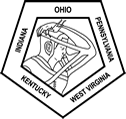<< Back to the abstract archive
Complications of Mandibular Distraction Osteogenesis: A Review of the Literature and Case Series
Daniel Master, M.D., Pamela Hanson, D.D.S., Arun Gosain, M.D.
University Hospitals Case Medical Center
2010-03-28
Presenter: Daniel Master, M.D.
Affidavit:
Director Name:
Author Category: Resident/Fellow
Presentation Category: Clinical
Abstract Category: Craniomaxillofacial
Introduction
Mandibular hypoplasia, retrognathia, and/or micrognathia in combination with glossoptosis can lead to upper airway obstruction necessitating surgical intervention. Mandibular distraction osteogenesis (MDO) can address both the aesthetic and functional concerns of tongue-based upper airway obstruction. However, MDO can also be associated with a wide variety of complications.
Methods
PubMed was queried for all articles describing complications of MDO. Each article was then reviewed and relevant data was extracted and compiled. Finally, several case reports are presented to illustrate poignant examples of complications.
Results
Complications of MDO can be classified into nine categories. Relapse represents the most common complication (64.8% incidence) followed by poor aesthetic result (15.6%), nerve injury (11.4%), infection (9.5%), inappropriate vector (8.8%), device failure (7.9%), fusion error (2.4%), tooth injury (1.9%), and temporomandibular joint (TMJ) injury (0.7%). The most complex complications, including laterognathism and malocclusion, stem from an inappropriate distraction vector.
Conclusion
MDO is an invaluable technique for managing patients with tongue-based upper airway obstruction. However, minor and major complications alike are still encountered with MDO but may be avoided with careful pre-operative planning and intra-operative technique.



